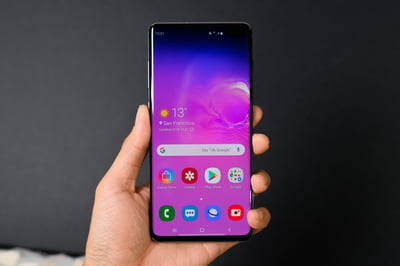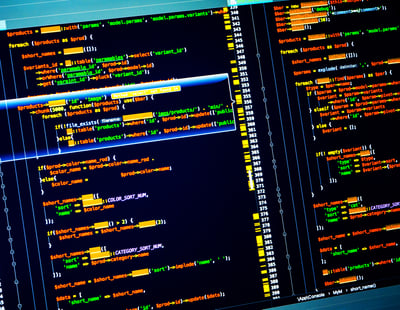April 10, 2020
 by Ana Lastovetska / April 10, 2020
by Ana Lastovetska / April 10, 2020

With over 600 programming languages out there, the process of choosing the right one to learn or develop a project has become a real challenge.
Out of all available and popular programming language options, Kotlin is one of the youngest. Still, over the last few years, its popularity has spiked significantly. After Google named it an official language of Android development, more and more companies started to consider it for their projects.
Today, being a Kotlin developer means being a competitive specialist on the job market. In this article, we are going to overview what Kotlin is, the main sphere of its applying, and why companies operating in information technology outsourcing are using it.

Kotlin programming language is quite popular today. Let’s start with the basics and learn what Kotlin is, how it started, and which companies build their solutions with this language.
Kotlin is an open-source programming language, which history started in 2016. The language is developed by JetBrains that are working on making Kotlin the main programming language for both Android and iOS.
Kotlin programming language runs on the Java Virtual Machine (JVM), which makes it a direct competitor to more widely known and mature Java with over 20 years of history. Both languages can be used in the same spheres, including server, client, web, and Android developments.
The combination of powerful features with clean code makes programmers from different industries turn their attention to Kotlin.
In 2019, a turning point in the development of Kotlin occurred. Google named it as a preferred programming language for Android application development, which raised its status in the eyes of many.
Kotlin has grown in popularity since its initial launch. Thanks to the acknowledgement from Google, it gained wide recognition. In fact, 66% of developers say that they are using Kotlin for Android development.
If we look at the companies that recognize Kotlin as a programming language with huge potential, we can see such worldwide known names as Google, Atlassian, Pinterest, Kickstarter, Uber, Netflix, and many others. There is no doubt that in the years to come more and more companies will choose Kotlin for their projects.
Kotlin is a general-purpose programming language, meaning it can be applied in a variety of spheres. Usually, Kotlin is used for cross-platform mobile, Android, JavaScript, and server-side development. Let’s investigate each aspect that Kotlin is good for.
One of the reasons why companies choose Kotlin for mobile development is the ability to create cross-platform applications. The main philosophy behind the programming language is that you don’t need to migrate the entire application to a distinct operating system.
Creators of the Kotlin programming language encourage developers to build applications step-by-step, starting with a single module or feature, testing it and only them moving to other parts.
Kotlin splits business logic and user interface, allowing to create fully native UI and app appearance. The programming language allows developers to use already written code and modify it for iOS.
Such an approach results in less code, fewer bugs, and a substantially lower cost to create an app. There is no need to have two separate iOS and Android development teams, which makes Kotlin a more time and cost-efficient programming language.
Till the introduction of Kotlin in 2016, all Android applications were written with the help of Java. And no one even suspected that they needed a substitute for a language with many years of rapid growth. Until Kotlin was released, starting the never-changing Kotlin vs. Java opposition.
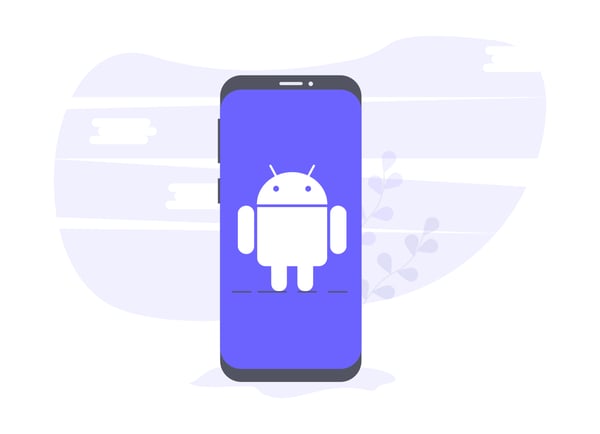
Kotlin introduced a new way of building Android applications. Developers no longer need to use Java, an established language, but with a lot of issues. Even though some of the problems were solved in Java 8 and further addressed in Java 9 and Java 10, its popularity has wavered.
The main advantage of Kotlin in Android development is the compatibility with JDK 6, which means that developers can develop solutions for older devices. Other reasons why many Android developers turned to Kotlin include high performance, interoperability, tiny runtime library, and fast compilation.
To add, Kotlin programming language can be used in the same projects alongside Java. That’s why there is no need to rebuild the whole project with Kotlin. It is possible to test the grounds by writing some features in Kotlin and seeing how it will go.
As you already know, Kotlin can run on a virtual machine, which means that you can create a code in Kotlin and use its transpilers to modify it to another language. However, the virtual machine doesn’t support all environments, including embedded systems and browsers. That’s why to run an application in the browser, we need to use JavaScript.
If you don’t want to write code in two different programming languages, you can compile Kotlin code to JavaScript. This way, it is possible to use the code for both client and server web developments.
You might be wondering why you should take time compiling Kotlin code, even though JavaScript is so widely used. In the nutshell, JavaScript is not the best choice to develop large applications. Also, it is possible to create a web service and desktop application targeting Java Virtual Machine and corresponding web client targeting JavaScript.
Kotlin is not only a programming language for Android development. According to data by JetBrains, the language is used in two directions, Android and server-side developments. There are a lot of companies already using such an approach, including Google, Hexagon, Gradle, and so on.
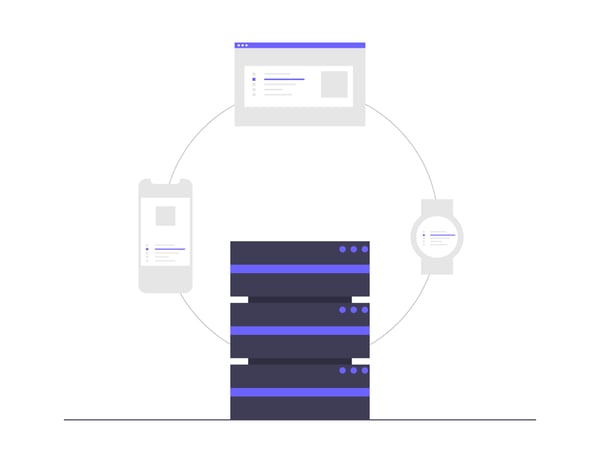
Kotlin is great for complex projects that heavily rely on boilerplate and logic. By eliminating boilerplate, Kotlin significantly reduces the size of code compared to Java. It all results in a less costly development process and easier project support.
There is no doubt that Kotlin is a very interesting programming language aiming to solve problems in different domains. Programmers specializing in Kotlin are a very valuable resource for any software development company, as they can engage in the development of different solutions.
For many years, Java was the one and only programming language for Android and server-side development. However, with the rise of Kotlin, its dominant position has changed. At that time, Kotlin vs. Java opposition started and it has not been solved up to date.
Below you can find the main differences between the two and learn which tasks each of them is better for.
You can perform the same tasks and implement the same features with the help of Kotlin and Java. However, Kotlin allows achieving the same results with fewer lines of code, which positively influences code maintainability and readability.
Programmers don’t have any problems reviewing and changing code written by other specialists. This is especially important during the implementation of complex projects when the development team grows. Type interface, smart casts, data classes, and properties help to achieve a high level of concision.
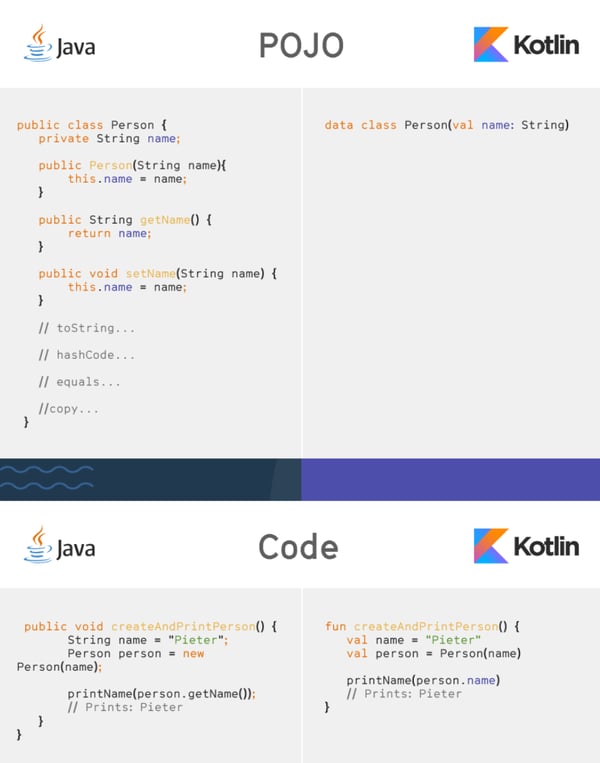
Interoperability is probably one of the most attractive features of the Kotlin programming language. From the very start of its development, Kotlin creators set the goal to make every library available to Kotlin programmers. It allows writing some parts of code that work seamlessly within Java code. It makes the process much easier to switch from Java to Kotlin during development.
When we talk about Android development, in-built null safety makes Kotlin an obvious leader. NullPointerException is one of the main reasons for major mistakes in Android, as Java allows developers to assign a null value to an object reference. In most cases, Android app crashes happen because of such values.
Kotlin, on the other hand, offers inherent null safety, meaning that no variable or object can be assigned with a null value. As a result, developers need to write less code as there is no need to come up with solutions to sidestep the issue.
When it comes to performance, Kotlin runs as fast as Java. However, the support of inline functions and the use of lambdas allows developers to create applications that ran faster as compared with the same Java code.
Two programming languages have a difference in their compilation. Java compiles 10-15% faster than its counter partner in clean builds. Still, in incremental compilations when only code with modifications is compiled, no the whole build, Kotlin performs slightly better. Generally, Kotlin is better equipped to handle functional programming.
This is another point where two programming language differs. In Java, such expressions are checked during the compilation process. If a method has such an expression, the method should either handle it or developers need to specify them with the keyword ‘throws’.
Developers need to track down all nonexistent exceptions to handle them or declare that such exceptions can be thrown, which takes quite a lot of time. Otherwise, in some instances the prevent code from running. Kotlin does not have checked exceptions, which results in fewer efforts needed to write code.
Java lacks this feature, which makes Kotlin superior in terms of using multiple inheritances. Kotlin allows for a receiving object to delegate operations to a second delegate object, which is called the helper object. Such a helper object contains original content, so that developers don’t need to rewrite it again.
With multiple inheritances, it is possible to avoid duplication of code. If there is a need to reuse some parts of code for a few properties, the code can be extracted into a delegated property.
Big projects tend to have multiple classes with the only task of holding data. As was already mentioned, Java developers need to deal with a lot of boilerplate code. Data classes are no exception, even though they don’t perform a lot of functions. With Java, you need to define a constructor, fields that will store data, getter and setter functions for each field, and so on.
Kotlin approaches the task from a different perspective. By including the “data” keyword in the class definition, you can avoid setting up everything manually. The compiler takes on the task and generates all necessary getters and setters automatically.
Once more, this feature makes Kotlin a more time-efficient programming language as compared to Java, which requires a lot of manual coding to be performed.
With over two decades of being on the market, it is not surprising that Java has a bigger community when compared to Kotlin.
Based on the dozens of completed projects, there are lots of ready-made solutions and open-source libraries for Java development. The large Java community can be a supporting factor during any challenge you may potentially face in the software development process.
Kotlin programming language is still lacking such huge support. As compared to Java, its learning resources and tools might seem quite limited. Moreover, hiring Kotlin developers can become a real challenge as there are still not many specialists that know this technology. Kotlin is primarily used for new projects. In years to come and with the rise of new projects, its popularity is expected to grow also.
No one could even predict that a new language would gain such popularity in such a short time. Not long ago, Java was considered to be the primary language of Android development.

Right now, it is losing ground to Kotlin, a language better equipped to meet modern industry needs. The main reason why it was created is to make the development of digital products smooth, faster, and cost-efficient.
Below you can see a table in which all the mentioned information in the article is summarized:
|
Kotlin |
Java |
|
|
Spheres of use |
Open Source Java to Kotlin converter Object-oriented and functional programming |
Open Source (only OpenJDK) Object-oriented programming |
|
Security |
Higher security (enabled by null safety) |
Average security |
|
Code conciseness |
Highly concise |
Boilerplate |
|
Compilation time |
Fast (incremental compilations) |
Fast (clean builds) |
|
Community |
Smaller community |
Huge community |
Generally, Kotlin is more secure thanks to null safety. It is more flexible and concise, and allows for developing complex solutions with fewer lines of code. These aspects decrease the chance of bugs and errors appearing in the software development process.
With JetBrains and Google so actively promoting Kotlin, there is no doubt that we will hear about this programming language a lot in the future and many new and big projects will be developed with its help.
To learn more about development basics across the board, check out G2's web development hub or app development hub for ample resources to suit your needs.
Ana Lastovetska is a technology writer at MLSDev, a custom software development company in Ukraine. She has been researching the field of technologies to create educative content of distinct topics including app development, UX/UI design, tech & business consulting, and more.
So, you want to be an Android app developer...
 by Bridget Poetker
by Bridget Poetker
The mobile industry is booming.
 by Bridget Poetker
by Bridget Poetker
So, you’ve come up with a brilliant idea for a web application that is going to be a...
 by Emil Waszkowski
by Emil Waszkowski
So, you want to be an Android app developer...
 by Bridget Poetker
by Bridget Poetker
The mobile industry is booming.
 by Bridget Poetker
by Bridget Poetker
